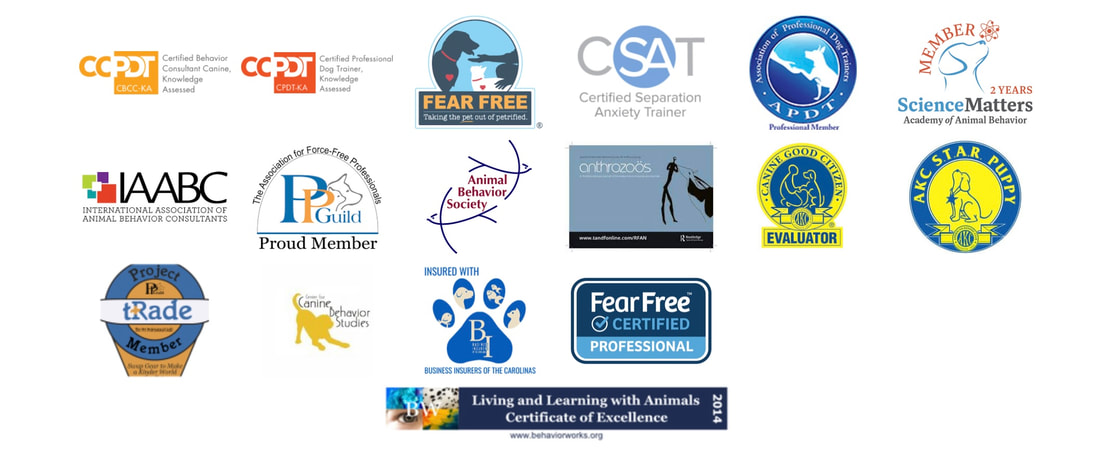Pet Professional Roles
Vivian Zottola, MSc, CBCC | 617.721.8025
Do you need help understanding who does what? This document covers the differences between pet professionals and who to hire when.
Bringing a new dog home
Vivian Zottola, MSc, CBCC | 617.721.8025
Is Your Home Prepared for a New Dog?
We have decided to bring a new dog into our lives and make our house a real home. With all the excitement of bringing a new dog into the family, we may overlook some fundamental and necessary considerations that will help make them comfortable. Dogs have evolved to perceive the world and their surroundings differently, so making mistakes is not uncommon. First and foremost, we should consider safety from an emotional and physical perspective. Let's help reduce the risk of frustration (for us both) and help our new four-legged family member. Here are some suggestions for making your home safe and comfortable for your dog.
Vivian Zottola, MSc, is an Applied Anthrozoologist, human-dog relationship therapist, and freelance writer specializing in preventing and resolving behavior challenges between humans and pet dogs. For more information on Vivian Zottola, see www.VivianZottola.com to send questions and contact her at vivian@bostonk9concierge.com
We have decided to bring a new dog into our lives and make our house a real home. With all the excitement of bringing a new dog into the family, we may overlook some fundamental and necessary considerations that will help make them comfortable. Dogs have evolved to perceive the world and their surroundings differently, so making mistakes is not uncommon. First and foremost, we should consider safety from an emotional and physical perspective. Let's help reduce the risk of frustration (for us both) and help our new four-legged family member. Here are some suggestions for making your home safe and comfortable for your dog.
- Prepare with an area where they can rest with low noise. Think of a calm area in the home. You can use baby gates to contain the new dog for when they will eat (initially, we will want to give them privacy to eat), for when they need to rest in a space of their own, to practice departure training, and to sleep at night. I suggest this area be in the home where the family lives (not the garage or basement). Dogs like us are a social and cooperative species, and it's best to provide them with natural light and not isolate them but keep them nearby in a place that offers assurance. They should be able to smell, hear, and see us, especially for the first phase of living together.
- Provide the dog with a comfortable bed in the home
- Move rugs off the ground until house training is completed
- Move furniture around to make the home uncluttered and more spacious
- Provide clean water and food bowls
- Depending on the dog’s age and circumstance keep a crate "just in case”, you need to manage and work on potty and bladder control training. Note crates are excellent for safety purposes. They can help muffle sounds, especially if dogs are sound sensitive, and can help some young dogs with bladder control training; however, they are not ideal for managing dogs in the long term. It is good to have one on hand for emergency use.
- Provide enrichment and mental stimulation. Enrichment is an enjoyable activity for the dog and improves quality of life. Think of seek-and-find puzzle toys, stuffed kongs, frozen bone broth, playing with soothing sounds, and diffusing essential oils. These are a few examples of Enrichment for dogs in the home.
- Cover furniture and remove or collect long cords and tassels as these could be strangulation hazards.
- Remove or block access to all dangerous and toxic food, medicine, and plants
- If the home has a balcony install wire, plastic or other material to block the dog from falling. If the home has a yard, install a physical fence they can see to restrict their ability to leave the property.
- If the home has a condo association or in a high rise, learn about scheduled fire alarm testing and ensure the dog is not home during tests
- Ensure the dog wears a flat collar with their name and my number in case they escape
- Ensure your dog wears a harness and leash to walk outdoors
- Consider introducing the dog to your neighbors and making friends with other dogs in the building or neighborhood
Vivian Zottola, MSc, is an Applied Anthrozoologist, human-dog relationship therapist, and freelance writer specializing in preventing and resolving behavior challenges between humans and pet dogs. For more information on Vivian Zottola, see www.VivianZottola.com to send questions and contact her at vivian@bostonk9concierge.com


